In landscape design, especially small territories, dwarf and low-spirited varieties of decorative plants are increasingly popular. Dwarf pine is one of these cultures. A variety of varieties allows you to choose a type of dwarf pine with the desired form of the crown, the needle color and the size of an adult long-term plant.
Landing dwarf pines are capable of creating a unique evergreen landscape on the site. They are appropriate both in single landings and in group compositions, both near reservoirs and stony alpine slides.
It facilitates the task of growing evergreen low pine her unpretentiousness, stamina to various climatic factors and the overall life of the plant. How to grow dwarf pine yourself? What to choose a variety? How to care for a saplth and an adult plant? All about landing and caring for pine carlikova - in this selection of material.
Dwarfs, plant description
The dwarf shape of the pine is a type of a well-known type of coniferous trees and shrubs "Pine Mountain" or, as it is also called, "Pine Slynic European". This species refers to the extensive genus "Pine" from the Pine Family.
- The view of the mountain pines belongs to rather tall trees reaching in a height of up to 25 m. The birthplace of many years of culture is considered to be the southern and central part of the mining area of \u200b\u200bEurope.
- Dwarf variety of pine has a look of a dense shrub with a spherical or spreading of the crown, depending on the varietal supplies. In any case, the sign of dwarfship implies the cultivation of a compact low plant.
- The bark on the trunk and the weed branches of pine - scaly peeling, gray-brown shade. Young shoots are distinguished by juicy, salad color.
- The dark green needles is not long, about 3-4 cm, characterized by a pomp and a small curved lines. Hard and short stupid needles are like being twisted, while they are located beams, several pieces, creating the effect of very thick and fluffy branches.
- Small kidneys of dwarf pine small in size, have an ovoid shape with a pointed end.
- The bumps are mainly seated, up to 7 cm long, can be located singularly either 2-3 pieces. The aging of the seed occurs on the 3rd year of the cones.
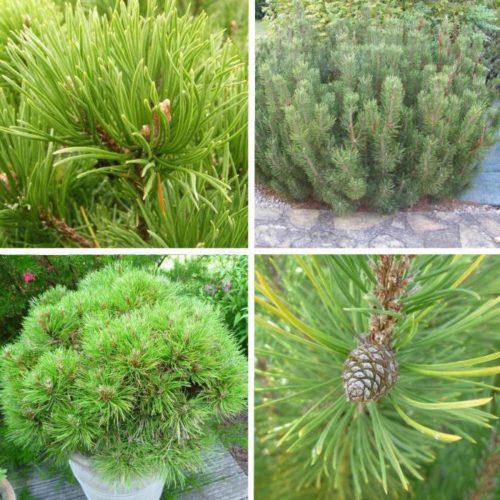
- Root system - rod and well-branched due to the development of lateral and apparent roots. This feature is manifested in high wind resistance of pines and the ability to consolidate the soil.
- Pine dwarf dwarf as well as her "Sorodii" - hardy frost-resistant coniferous culture. The perennial easily adapts to the urban environmental conditions, even in conditions of strong gas and atmospheric pollution.
- Pines are rightfully considered long-livers among plants. At the same time, unpretentiousness made the culture of the favorite of many gardeners and dachens. Pine perfectly makes windy or arid weather, harsh cold and heavy snowfalls, grows on various types of soil, easily adapts to new climatic conditions.
Dwarfs, scope of application
- Thanks to its decorative attractive appearance, the main purpose of the dwarf pine in culture is the decoration of garden sites, gardening parks and squares, the creation of evergreen flower.
- Dwarf views of the pines are spectacularly looking at almost any landscape design. Evergreen "Beauties" occupy a small area and are valued for high-scale qualities that do not change throughout the year. The evergreen culture is especially bright, when other deciduous plants graduated from flowering and dropped the leaves. Then the dwarf pine becomes the main "highlight" for the empty garden. But in the warm period, dwarf pines skillfully placed in a single landing as an accent, or in group compositions, are not inferior on decorative attractiveness to other plants.
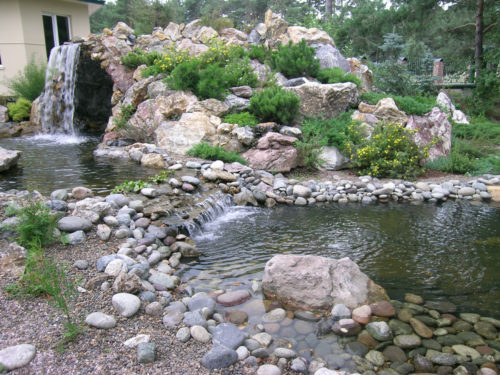
- In addition to aesthetic value, pines, even if dwarf species, planted to strengthen the slopes on the site, the formation of protective landings, warning landslides and strengthening loose soil.
- Durable Pine Wood can also serve material for the manufacture of any joinery.
- Coniferous culture perfectly cleans the air, having a soothing and healing effect on the human body.
- Calician pine seeds contain essential oil, widely used in cosmetology or pharmacology.
- Dwarf varieties of pines can also be grown in a pot as a houseplant.
- In many Eastern countries, in particular in China, Pine is recognized as a special plant, a symbol of well-being and longevity. In this regard, the indigenous people try to plant near the house this is "happy" tree. And if you do not allow the size of the household plot - the miniature varieties of dwarf pines are ideal.
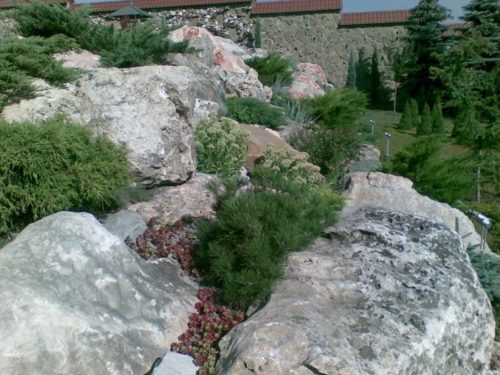
Pine dwarf, varieties and varieties
What is the difference between dwarf and tall views of the pines?
The classification of decorative coniferous plants is based on a series of features and characteristics: the shape of the crown, length and color of the needles, an annual increase, etc.
In terms of annual growth and height of an adult plant, evergreen crops are divided into: full-resistant (average increase in the year for a year 30 cm), the average (growth for the year 15-30 cm), dwarf (growth for the year 8-15 cm), miniature (increase per year 3-8 cm), microscopic (growth for a year 1-3 cm).
In landscape design, the following forms of dwarf pine are most often used.
Dwarf pine "Mugus"
- A shrub shape of a dwarf pine with a widely spreaded crown is growing no more than 2-3 m in height. The crown shape is flattened and griming, slightly reminds the wrong hemisphere.
- In the diameter, the shrub expresses slowly, 5-10 cm per year. So, by 30 years, the diameter of the crown is about 3 meters.
- The color of the needles - dark green, needles twisted and short. Cones long, yellow.
- The plant is light-chapter, compact, grows almost on any types of soil (even on sandy).
- It looks spectacular in a single and group landing, near water bodies or as a hedge.
- A variety easily tolerates the forming haircut, so it is often used to land in the style of bonsai.
Dwarf pine "Pumilio"
- Dwarf coniferous shrub with thick and rigid cheese, reaching in an adult state of height not more than 1.5-2 meters. Annual increase is 5-6 cm.
- A slow-growing squabble with a splashing spherical crown of densely covered by a short green cheese.
- The diameter of the crown formed shrub is about 2-3 meters.
- Planting this pine grade is often used for decoration of alpinarias or heather gardens.
- Unusual in the color of young pine cones are highlighted by purple-pink shades. The bumps have a slightly elongated cone shape.
- This variety of dwarf pine is considered one of the most popular in landscape design. The most appropriate landing of Pumilio in rocky gardens, on the Alpine slides or near the reservoirs.
- The light-lubricular shape of the dwarf pine easily endures a haircut, drought and low temperature mode.
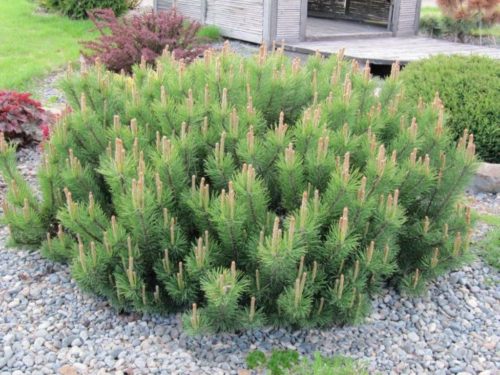
Dwarf pine "Pug"
- The miniature variety of pine, which has an annual increase of only 2-5 cm. The adult plant reaches a height of no more than 1-1.5 meters.
- The variety is distinguished by a dense and thick dark green crown, the correct spherical form growing in the amount of no more than half the meter.
- Short shoots and needles (needles up to 3 cm). Smithful kidneys range from 1 to 2 cm.
- It is used as a decorative garden decoration or as cultivation of bonsai. Culture perfectly "succumb to the forming haircut.
- A variety of dwarf pine pine is perfectly tolerated both dry and well-humidized soils, which increases the possibilities of landing with other companion plants.
Dwarf pine "Gnome"
- Compact dwarf form growing no more than 2 meters.
- The diameter of the crown of an adult plant is about 1.5 meters. The crown shape is rounded and dense, over time acquires the kind of dome.
- The needles are dark green, rigid, located on the branches of the beams.
- Miniature pine "Gnome" looks effectively in group landings, along allest or in containers when placing balconies.
Dwarf pine "Winter Gold"
- A feature of the variety is the color of the needle, changing during the season. Bright green by the autumn of the needles acquires a beautiful golden shade. In winter, the needles become brown and yellow.
- Dwarf pine is distinguished by miniature sizes: up to 0.8 m in height and up to 1 m in diameter.
- Slowly growing highly decorative variety of dwarf pine is worn and unpretentious in care.
Dwarf pine "Min"
- The miniature shrub grows in a height of no more than half a meter, in the amount of crown - up to 1.5 m.
- The plant has an extraordinarily beautiful color of the needles: bright green, which takes a gentle blue tint to the end of summer.
- Such a dwarf blue pine with age slightly modifies the shape of the crown on the pillow. The perennial needles are thick and tough.
- Dwarf pine "Min" is a popular coniferous plant among landscape designers and amateurs gardeners.

Dwarf pine "Mcoping"
- This type is appreciated for the practically correct, the ball shape of the crown with a low-speed top.
- Dwarf variety reaches no more than meter.
- Compared to other varieties of dwarf pine, Macoping needles are longer and soft, painted in a greenish blue color.
- Unpretentious grade, which is successfully grown in containers.
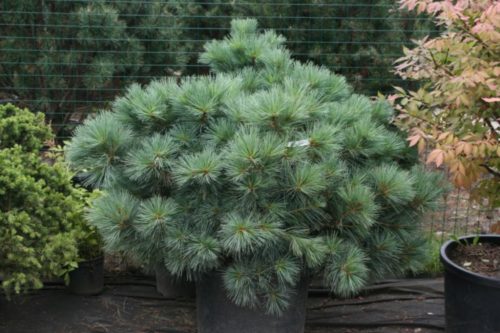
Pine dwarf: where and how to buy
The best option to acquire a saplings of dwarf pine is in specialized nurseries, garden centers or botanical gardens of their locality. This factor is important in connection with the adaptation of the plant to a climate zone, which in turn will affect the accessibility and further development of coniferous perennial.
- Before you buy a pine dwarf - it is necessary to determine the choice of variety, given its size, the crown shape and the increase in the year.
- Buying pine seedlings only with a closed root system (i.e. in a container), which will make it possible to easily transplant the plant to a new place, not traumating the roots and keeping the earthen com. Pine roots are very sensitive to drying, so seedlings with an open root system have a low percentage of survival.
- For better survival, it is necessary to choose healthy strong seedlings, which are less than 5 years old.
Some lovers try to transplant young saplings of pines, dug, for example, in the forest. This option is absolutely acceptable, but it is important to realize which tree will grow later on the plot. Tall pines from the forest will require a large space and turns into time in the real "giants". To avoid similar surprises, you should keep your choice on tested dwarf varieties of pines.
Landing of dwarf sosses
The uniqueness of dwarf pines consists in their unpretentiousness and endurance. Culture is not afraid of drought, open winds and drafts, frost and snowfall.
The plant is capable of growing on any soils: stony, lime, sandy, saline and non-fermentation. But, nevertheless, for optimally favorable development of culture, it is worth considering certain features and preferences of coniferous perennial.
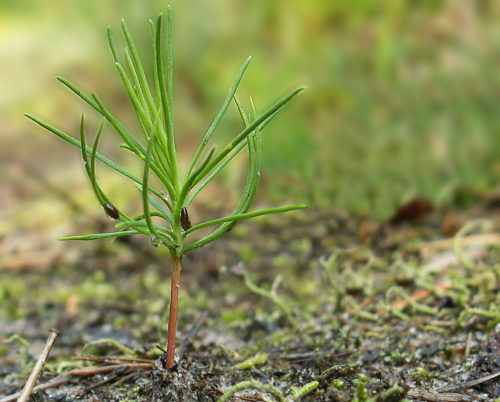
Choosing a place for landing of dwarf pines
- As a light-affilome plant, pines need to plant on open solar sections. Lightweight is also allowed. It is important to initially choose the place for landing evergreen culture, given its ability to longevity.
- The best option for planting pine is a loamy or sugal soil with a neutral or weakly alkaline medium reaction. Sour soil is better to enroll.

Agrotechnology landing of dwarf pines
- The planting of pine seedlings are carried out in spring (after thawing and sufficient warm-heartment) or in the fall (at the end of September - early October).
- Before planting a saplings of a dwarf pine, the area is freed from weeds, dripped and only then prepare the landing pit.
- The depth and width of the landing pits vary depending on the size of the root system or the earthen coma of the planting plant. As a rule, a yam 70x70 cm is digging.
- Pine does not like excess moisture, therefore, for better development of coniferous culture, when landing should be provided with a nice drainage. The drainage layer is especially important with dense heavy soil, for example, clay. The drainage layer has a thickness of about 20-25 cm. For drainage, clamzit, broken brick, slate fragments or crushed stone suitable for drainage.
- A layer of soils is poured on the prepared drainage layer and exhibit a seedling. The best composition of the soil: Sherry Earth, Sand (or Clay) in a 2: 1 ratio, respectively. To facilitate heavy soils, peat (or sand) is also added.
- As for fertilizers, the organic is not worth using, as the pines this feeder is not very "love." With too meager, the soil can add mineral nitrogen-containing fertilizers.
- Planting a seedling, the main thing - to preserve the earth around the roots of the seedling. In this case, the young plant quickly and without any problems is taken on in a new place.
- The seedloves fall asleep with soil, periodically sealing landing place. From above, the rolling circle is sprinkled with a thin layer of sand.
- When landing, the root neck must be slightly above the ground level.
- After planting, the priority circle is rich in water.
- When landing several seedlings, it is important to take into account the future dimensions of the crown of the plant. The average interval between cultures is from 2 to 3 meters.
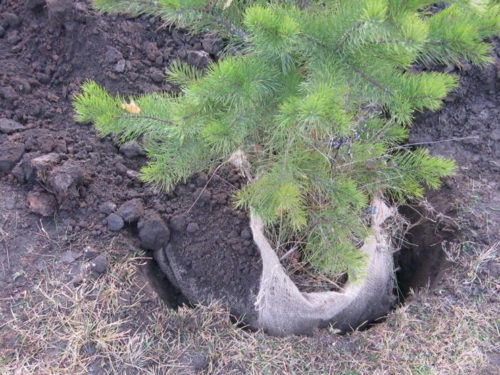
Dwarf pine, care characteristics
Care for a mountain dwarf pine is not distinguished by special requirements. It includes traditional agrotechnical activities, such as: watering, weeding, feeding. Of particular importance is careful care in the first 1-2 months after planting the plant. For rooting, the seedlove needs regular watering and shading from direct burning sunlight.
We note the key regulations of competent coniferous culture.
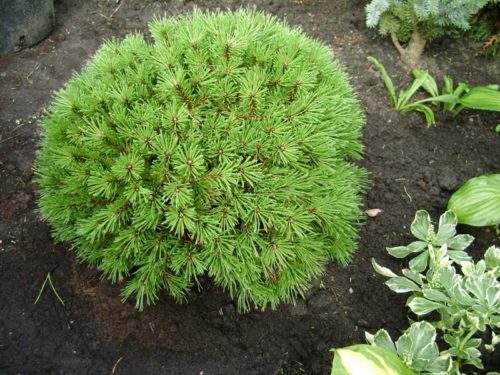
Watering and loosening Pine Karlikova
- Watering is especially important for young rising pine seedlings. The first two years of development a perennial needs regular temperate irrigation.
- Adult evergreen plants are resistant to drought and perfectly transfer the absence of regular humidification. Watering them only in a very dry period.
- Periodically, especially growing pines, need to remove the weed herb and loosening the priority circle.
- Later, when the squeezing needles appears, it is not necessary to loosen the soil, it turns out the natural process of mulching the portion under the pine.

Feeding and making fertilizers for pine carlikova
- This item is not at all optional when care for adult pines and in the case of fertile, nutritional soil. It is recommended to feed only young growing copies in the first few years after landing.
- If there is a need to "feed" coniferous culture - only mineral complexes should be chosen. Special fertilizers intended for coniferous species of plants are excellent. Organizer can provoke dry drying with subsequent falling.
- The fallen needle serves as a kind of natural fertilizer and a mulching layer, so it is not necessary to remove it.
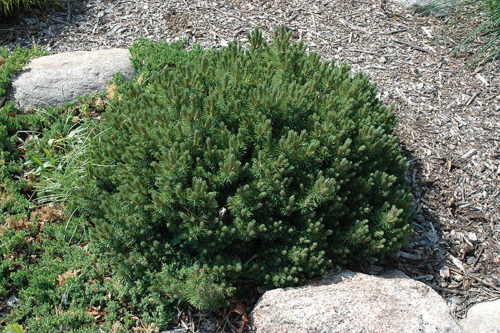
Preparation for the winter of Pine Karlikova
- Adult dwarf pine - highly frost-resistant culture, perfectly covered in open ground and immunity to temperature drops. In this regard, it is not necessary to strengthen the adult plant for the winter.
- Otherwise, things are doing with "young". Not hardened young plant (especially planted in autumn) for the winter it is better to cover with a sweetheart.
- Opening the "shelter" you need in the spring, after the steady steady weather.
- In winter, the branches of pine "are not afraid" of a thick layer of snow and do not rush.
- In the spring, when the snow fully utters, gardeners are recommended to pour pine with warm water. So the plant faster "wakes up" and "launch" all the growing processes.
Trimming Pine Karlikova
- Some pine varieties can be cut, forming the desired crown shape. For the formation of the crown, the growth of the escape is removed or the necessary young shoots are shortened.
- The pruning procedure, both forming and sanitary, is carried out in spring. In the summer, additional "adjustment" of the abundant shoots is possible.
- Sanitary trim involves removing dry, damaged branches.
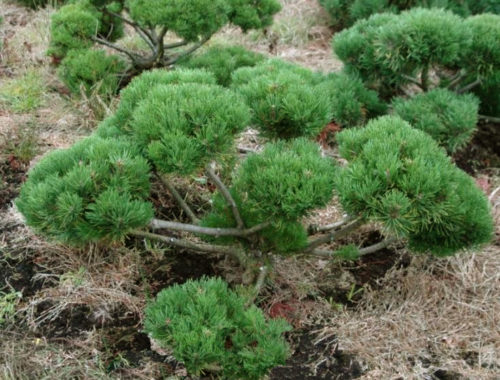
Fighting diseases and pests Pine Karlikova
- Pine dwarf, as a representative of coniferous plants, is very resistant to various diseases or pests and is rarely affected by those.
- Under adverse conditions, pine environments can still be attacked by pests such as pine soil, hurmes, coniferous worms, pine flap and subcorteuric bug.
- Pine flounce feeds on floral juice of pine needles, after which the needles begin to dry and fall.
- Insects - Hermes are striking trunk and shoots, as a result of which these parts of the plant are deformed and easily infected with fungal infection.
- The attacks of coniferous worms looks like the appearance of a native of the coil on the needle, which is later twisted and pops.
- Pine flap hides under a fluffy cheese and can lead to the death of the whole pine.
- Double bedbugs can settle under the bark of the tree. Visually, these pests can be determined on the signs of drying the needles on the tops of the shoots.
- To combat the above pests, insecticidal preparations are used, such as Aktellik, Akarin et al.
- To prevent the appearance of pests and the prevention of diseases, the annual spraying of shrubs burglar liquid, pumping the rolling circle and timely circumcision of damaged branches is recommended. You can also use folk remedies, such as a solution of household soap or tobacco infusion.
- Increased humidity, thickened landings and weakened state of the plant can provoke the appearance of fungus - spit. The signs of the lesion will be drowned (with black splashes) of the painting of the needles and the appearance of a thin cobweb. As a result of the needles, it starts to dry and fall. Copper-containing preparations or a solution of colloidal sulfur are suitable for combating fungal disease. In this case, all the affected parts of the plant cut and burned.
- If the dwarf pine has become noticeably moving the elimination of the top kidneys, with the subsequent drying of the shoots - we can talk about the disease with scleroderriasis. For the extermination of the disease, damaged shoots are removed, and the plant is treated with the corresponding chemical preparation.
- The appearance of orange plates on the tips on the tips indicates infection of bubble rust. The affected plant must be treated with copper-containing drugs, and damaged shoots - remove.
Pine breeding carlikova
The reproduction of dwarf pine at home is a complex and time-consuming process. This can be done with seeds, vaccinating or by shifting.
- The formation of reproductive cones with seeds is possible only to achieve a pine of 6-8 years of age. Moreover, the seeds ripen only 2 years after pollination. In addition, it is important to note that not every kind of dwarf pine is capable of fruiting and the formation of cones with seeds. The seed method of breeding, as you know, the varietal signs of the parent individual does not preserve. Seeds are sown in spring in a separate container with further germination of seedlings.
- Reproduction with vaccination is considered the most successful and efficient. As a vaccination, both the kidney and a cutlets of the necessary variety of pine are used.
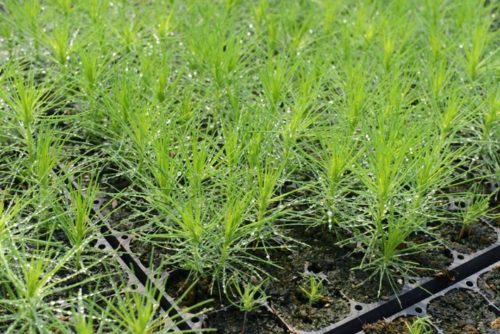
Thus, the cultivation of a dwarf pine on its site is a successful decorative landscape solution that does not require special effort from the gardener.
Not attracted to soil types, frost and drought resistant, dwarf pine requires special care only in the first years after planting a young seedling.
Unpretentious and straining culture is able to transform any corner of the garden, a square or a household site. Clean air, filled with a pine aroma, will not leave any fonder fan indifferent, and the aesthetic pleasure from evergreen culture will delight those around many years.

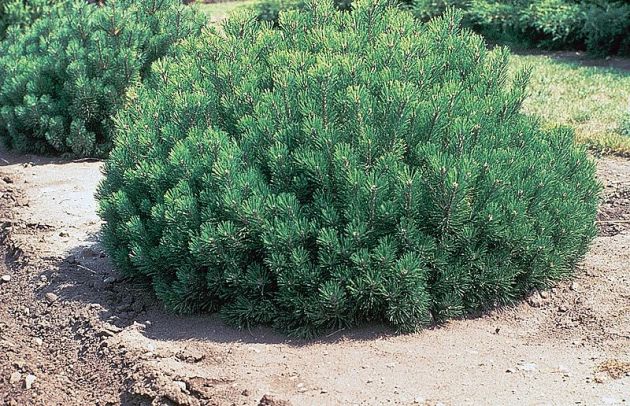
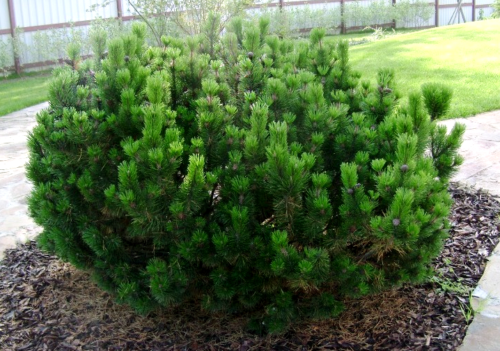
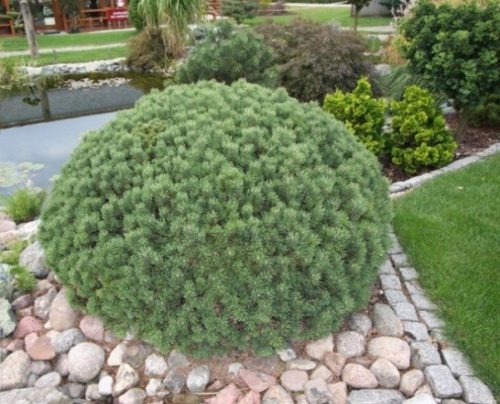
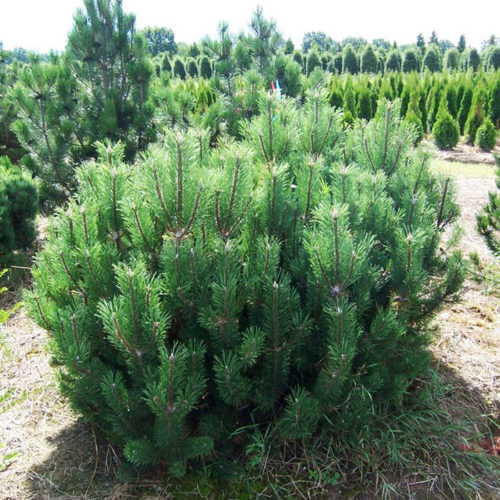


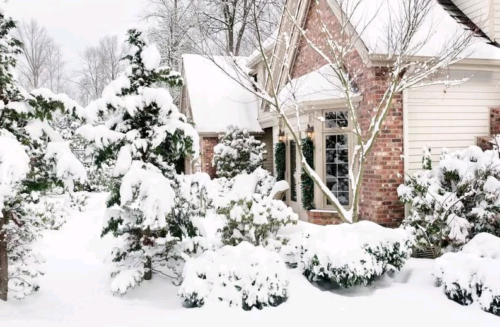

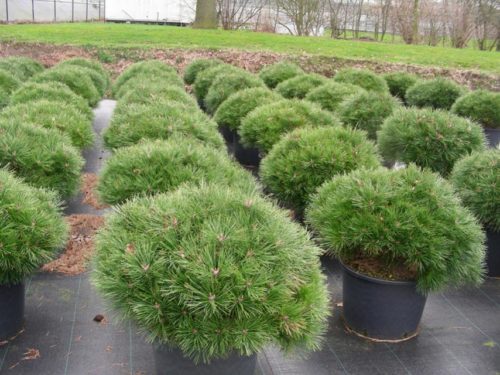
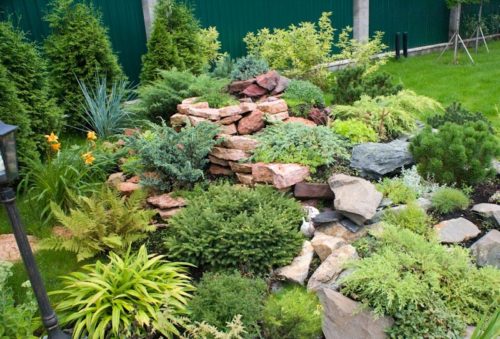
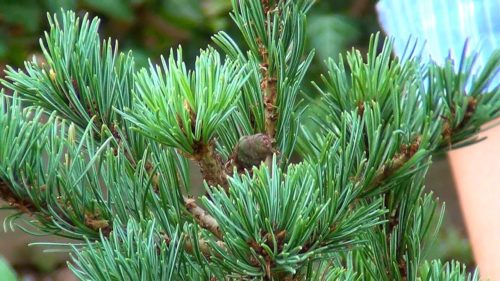
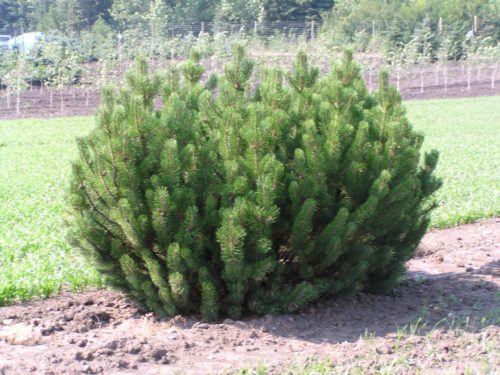
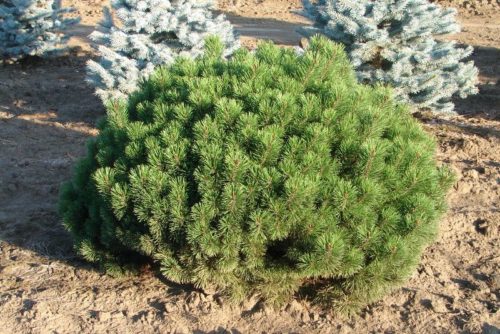
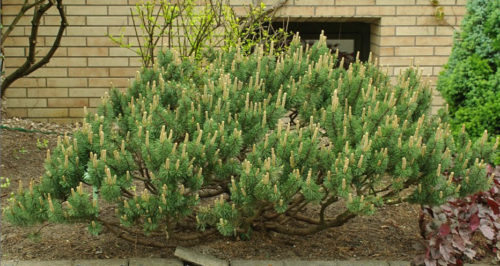
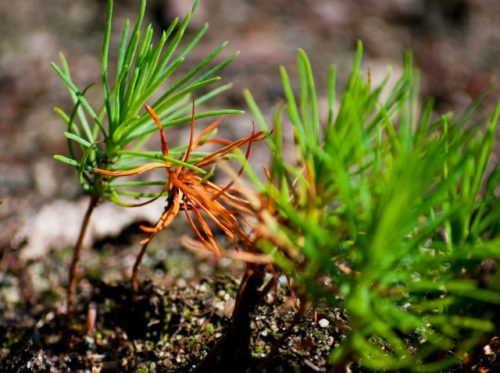
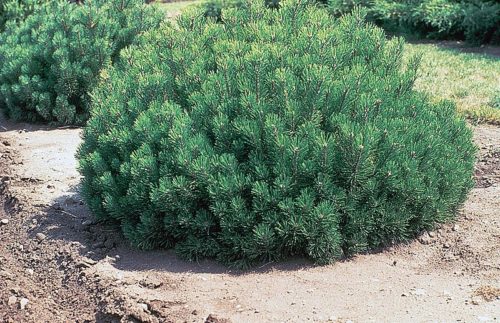












 Start a discussion ...
Start a discussion ...